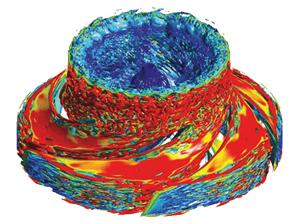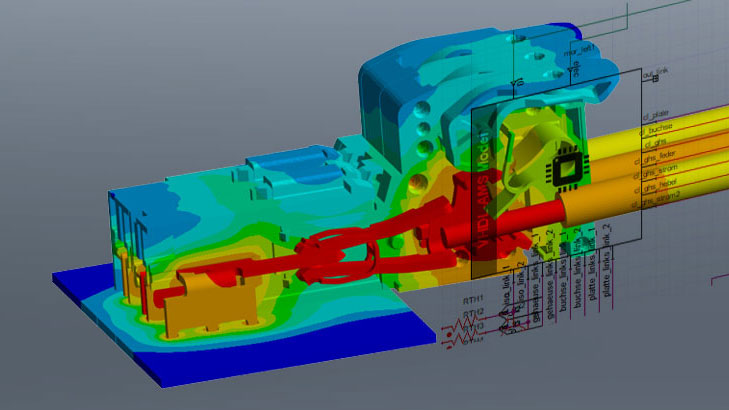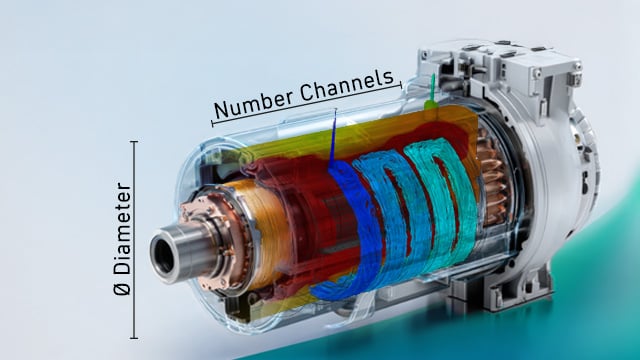CFD and GPU: These are the benefits that await you!
Dr.-Ing. Fabian Findeisen
19.11.2024
GPU instead of CPU: Computational fluid dynamics on graphics cards
Few high-end graphics cards instead of 1,000 CPU cores, more complex and larger models and cost efficiency: Simulation with the help of graphics processing units (GPUs) is revolutionizing the world of computational fluid dynamics (CFD). In this article, we highlight the compelling advantages of this technology.
Faster to the goal: The performance of 1,000 CPU cores with a few GPU cards
GPU computing accelerates CFD simulations tremendously. In addition to cooling, ports and memory, a graphics card also has a graphics processor. Parallel computation on this GPU and its numerous streaming multiprocessors (SMs), each with hundreds of cores, drastically reduces simulation times. The very high memory bandwidth of these cards is outstanding. A new technology called stream computing makes efficient use of these advantages: It enables continuous processing of data streams without having to constantly exchange them with the main memory of the CPU motherboard. A few high-end graphics cards can replace over 1,000 CPU cores.
In everyday simulation, this means in concrete terms:
- higher throughput,
- faster design iterations,
- shorter development times.

The completely new programmed Fluent CFD Solver for the graphics card utilizes the potential of GPU and stream computing for a significant leap in computing speed. | © Ansys
More complex and larger models: Mapping reality more accurately
Especially in transient models with complex physics, it is important to keep computing times within a reasonable range. In practice, this often leads to the use of simplified models and geometries. GPU acceleration expands your possibilities – you can now create models that more accurately reflect reality.
This allows you to:
- more accurate forecasts,
- recognition of complex effects,
- optimize product performance.

The multiplication of the computing power enables more extensive and complex simulations, e.g. with scale-resolving turbulence models. | © Ansys, CADFEM
Cost-effectiveness: an investment that pays for itself quickly
GPU-based CFD offers attractive economic advantages through many times lower investment costs compared to a CPU cluster with comparable performance. For users who already have very powerful hardware, switching to GPU can offer significant cost advantages.
Workstation PCs with powerful CAD graphics cards, which are common among designers today, represent an attractive alternative to the more expensive and sometimes difficult to obtain high-end cards.

GPU computing is faster and the total investment costs are lower than for a comparable CPU system. | © Nvidia, CADFEM
Energy saving and sustainability
The use of GPUs can lead to a significant reduction in energy consumption. Compared to a CPU cluster with 1024 Intel Xeon Gold Cores, a GPU server with two NVIDIA A100s requires only one-eighth of the energy. This is not only interesting from the point of view of operating costs, but also contributes to more sustainable corporate management.

Ansys CFD
Make fluid flows visible with Computational Fluid Dynamics (CFD). Analyze particle and material flows with Discrete-Element-Method (DEM) and SPH (Smoothed-Particle Hydrodynamics)
Conclusion: The future of CFD lies in GPU acceleration
The practical benefits of CFD simulation with GPUs are compelling. If you want to test the GPU Solver, please contact CADFEM!
Stay tuned for the next posts in our blog series:
- What features and models are available for the GPU today?
- Why is CFD simulation faster on GPU than on CPU – and how much?
- How accurate is the Fluent GPU Solver?
- What concrete application examples are there?




